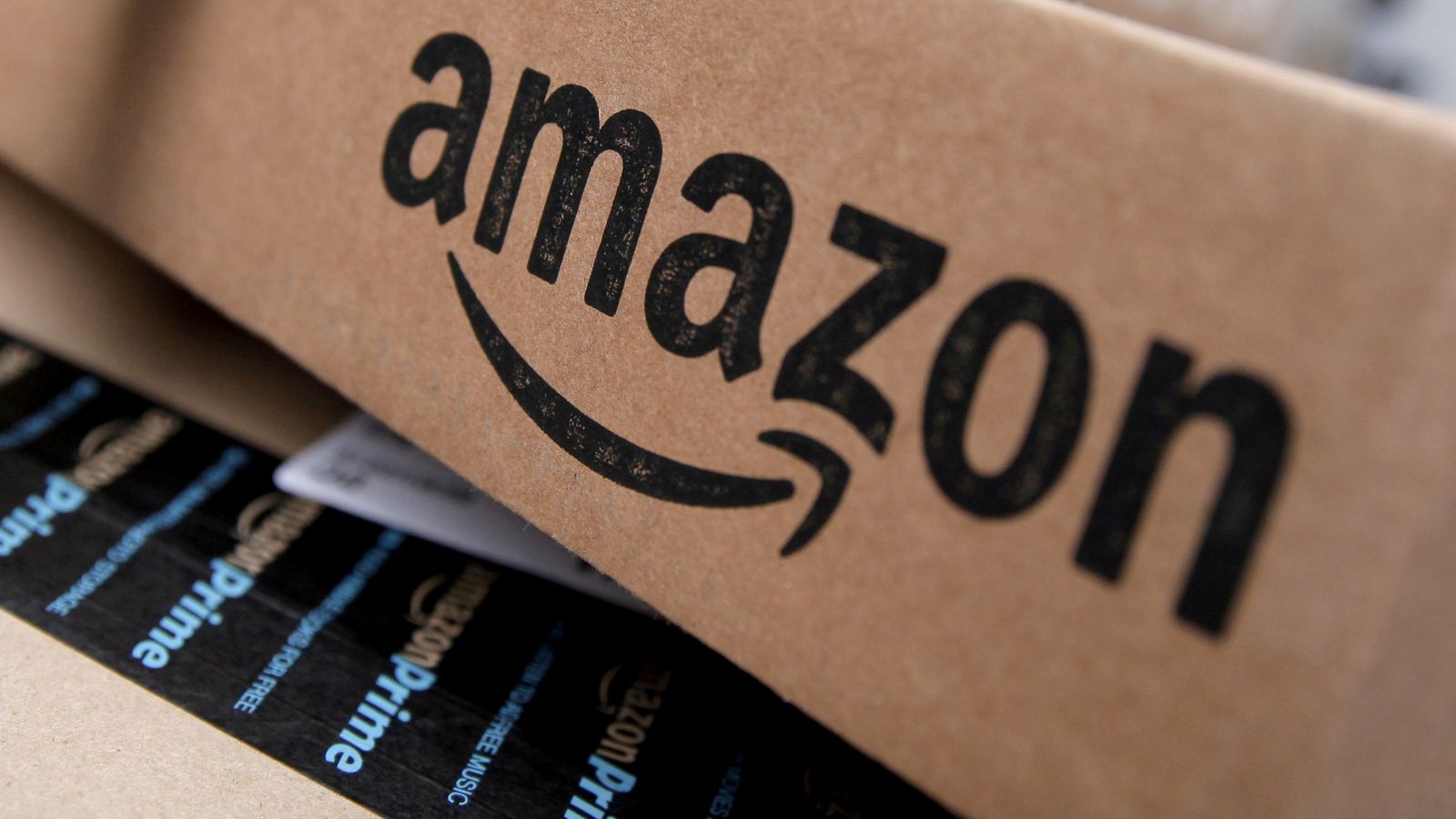After making it through the busiest three weeks of earnings season, we’re taking a step back and making sense of what we’ve learned. Here are four common themes around the consumer, banks, Big Tech and energy that have emerged among companies in our portfolio. 1. (Some) consumers are strong How’s the consumer holding up in the face of the hottest inflation in four decades? Earnings season so far tells us the answer is not as simple as “well” or “poorly.” It depends on who you ask and where you look. In a general sense, higher-income consumers have been able to weather the inflationary storm better than those in lower-income brackets. Unfortunately, this is not a complete surprise. The earnings reports of American Express (AXP) and Dom Perignon parent LVMH offer evidence of this bifurcation. Fast food giant McDonald’s (MCD), on the other hand, has said it’s seeing lower-income customers trade down to value-menu offerings and buy less combo meals. Walmart (WMT), which had been a Club holding until Monday , warned last week that inflation is causing many shoppers to spend more of their discretionary income on food and other essentials. What we’ve seen from the consumer-focused stocks we still own has, so far, been respectable all things considered. Amazon Wall Street had pretty low expectations for Amazon (AMZN) ahead of the print, but the e-commerce giant’s results ultimately proved to be mostly positive. While revenue at Amazon’s online store sales were down 4% year over year, that figure includes the negative effects of the strong U.S. dollar and compares to a time in 2021 when e-commerce sales soared thanks to the pandemic. Strip out currency headwinds, and online store revenue from April to June was flat compared with the same period in 2021, which happened to include Prime Day. This year, Prime Day is in Amazon’s third quarter (current quarter) — and, as we wrote last month, data suggests it was another successful day. Note: Online store revenue consists of revenue from first-party products and vendors. Amazon reports the commissions it collects from third-party sellers in its “third party seller services” segment, which grew 9% year over year. Sales at Amazon’s physical stores, which primarily consists of Whole Foods locations, rose 12% year over year (13% ex-currency). Costco Costco (COST) hasn’t reported quarterly earnings yet, as the wholesale retailer operates on a slightly different calendar than others; its fiscal Q4 numbers are set to be released Sept. 22. We have, however, gotten its June and July monthly sales data, and both updates served to only bolster our conviction in owning Costco despite concerns about a recession and consumer slowdown. On Wednesday, Costco said total comparable sales in July rose 10% overall , and 7% when excluding currency impacts and gasoline price changes. We also were very happy with Costco’s June sales . While we’ve liked Costco for years, the company’s membership model and value-driven ethos really makes it the right retailer to own in this environment . Membership fees are its main source of profit, protecting the bottom line even as other retailers face pressure there. Those fees also allow the company to offer competitive prices on the actual products in its warehouses, appealing to price-conscious consumers due to inflation. That said, Costco’s members tend to skew toward higher-income brackets , meaning they may not be feeling as squeezed compared to, say, the average Walmart shopper. Apple Apple’s earnings report also showed the resiliency of certain types of consumers. For example, sales of iPhones in its April-to-June quarter topped Wall Street expectations , and CEO Tim Cook indicated the company saw “a record level of switchers” to iPhone from Android devices. In general, iPhones are thought to be premium smartphones, so the figure Cook cites may suggest those who can afford to spend a bit more on their mobile device are willing to do so. While Apple did not issue formal guidance for its ongoing fiscal fourth quarter, Cook told CNBC the tech titan anticipates sales will “accelerate in the September quarter despite seeing some pockets of softness.” Procter & Gamble For Procter & Gamble (P & G), we know the products it makes like laundry detergent, toothpaste and paper towels will remain in demand even if the economy is slowing. It’s why we look at P & G as a recession-resistant stock. However, we are always mindful about the potential for consumers to trade down to cheaper alternatives of those essential household items. Management spoke about that dynamic when the company reported fiscal Q4 numbers last week . Here’s what CEO Jon Moeller said on the conference call: “As consumers face increased pressure on nearly every aspect of their household budgets, we invest to deliver truly superior value in combination of price and product performance to earn their loyalty every day. So far, elasticities in most categories where we’ve taken price increases have been better than our historical experience,” he said. Even though consumers have generally stuck with P & G despite recent price hikes, CFO Andre Schulten said it would be “naïve” to think consumers aren’t more attentive to their spending right now. To that end, the company expects at some point price elasticities to return to their historic levels. Note: Price elasticity is all about the relationship between rising prices of products and demand for those products. P & G execs are essentially saying that recent price hikes to offset rising input costs haven’t impacted demand as much as they’ve historically done. Schulten also said P & G is monitor what he calls a “reemergence” of private-label brands in certain categories, such as family care. However, the CFO said, “We are still able to grow share in those markets where we see private label coming back.” 2. Reasons for owning banks intact As we detailed earlier this week , we continue to hold two financial stocks in the portfolio despite the fact recession fears have weighed on the group: Wells Fargo (WFC) and Morgan Stanley (MS). On the earnings front, specifically, we hoped for a better quarter from Morgan Stanley than we received in mid-June, and Wells Fargo’s headline numbers were mixed . In both instances, though, our overall investment thesis remained intact, so we’re willing to be patient as they play out. Wells Fargo Our reasons for owning Wells Fargo, in particular, got a bit of a lift Friday morning, when the July nonfarms payroll report came in much stronger than expected, in a sign of labor market resiliency even as other data suggests a slowing recovery. This potentially helps Wells Fargo in two ways, evidenced by its shares up more than 2% on Friday in a down day for the S & P 500 . The first is the stronger the labor market remains, the more likely it becomes that the Federal Reserve remains aggressive in its rate-hiking approach to cool inflation. WFC’s net interest income is boosted by higher interest rates, so if Friday’s strong jobs number increases the odds the Fed issues another 75-basis point hike in September, that’s good for Wells Fargo. That said, next week we get two key inflation reports and those will also factor heavily into the market’s expectations of the Fed’s next move. The second way Wells Fargo can benefit from Friday’s jobs report is all about credit risk. The bank set aside $580 million in the second quarter to help cover potential loan losses. Defaults have been at relatively low levels during the pandemic, but with concerns about slowing economic growth, Wells Fargo believes they will likely increase in the coming months, so they proactively are holding onto those funds. At least for now, Friday’s jobs report lends some credence to the idea that, perhaps, the U.S. economy can stave off a recession, even as the Fed aggressively raises rates in an attempt to bring inflation under control. Under that scenario, in which employment levels remain high, Wells Fargo could run into fewer bad loans than initially expected. This means the money the bank proactively set aside could, eventually, be released and boost earnings in the process. In some ways, higher net interest income without a recession is a best-of-both-worlds outcome for Wells Fargo. We cannot predict whether that will occur, but the July jobs number is a feather in the cap of the bulls who believe it can. For that reason, we’ll be paying close attention to Wells Fargo shares in the near term. If they were to keep charging higher to around $50, we may trim our position out of discipline. It’s already our second-largest weighting behind Apple, and we don’t want to be greedy with the gain we have. The stock closed Thursday at $42.77 per share and has traded as high as $44.29 Friday. 3. Better-than-feared tech returns despite negative sentiment It’s no secret that the market has hated growth stocks this year. But with the broader market down, we’re going to stick by high-quality, cash generating tech companies. More Apple While we mentioned Apple’s iPhone sales above, the company’s overall third-quarter results were better-than-feared, beating Wall Street expectations. While Apple warned in the second quarter that supply issues could lower sales in the following quarter, the iPhone maker delivered revenue of $83 billion driven buy continued demand for its products. China lockdowns were not as painful as anticipated either. The company only saw 1% decline in that business as Covid lockdowns persisted. Apple also has a burgeoning services business, which was the fastest growing segment of the company’s quarter. While supply constraints could still be a burden going forward, Apple proved it can still deliver higher gross margins during this short-term phenomenon. While AAPL stock is being held back for the year, we think Apple is one of the best run companies that can handle an economic downturn. The slower macro backdrop is causing some companies to cut back on spending, but it’s safe to say cloud solutions will probably not be one of those pullbacks simply because businesses today rely on the cloud to operate. That was reflected in Club holding Microsoft (MSFT)’s latest earnings. Microsoft Microsoft delivered consistent growth in its cloud business driven by Azure and other cloud services, offset by softer PC demand, China lockdowns and supply disruptions. Microsoft also returned $12.4 billion to shareholders in its June quarter in the form of share repurchases and dividends, a 19% year over year increase. More Amazon Looking at Amazon’s overall second-quarter revenue, it also topped analysts’ estimates. One area that companies cut as they face budgeting challenges is advertising. But Amazon saw less of a slump in advertising revenue compared to competitors in the second quarter. Amazon also stands out as the market leader in the cloud. Amazon Web Services continues to be the most adopted cloud solution across industries. It’s difficult to bet against the e-commerce giant since it has tentacles in a slew of markets including health care, auto, telecom, media and entertainment, home security and many others. Alphabet Of the three main players in cloud computing solutions, Alphabet (GOOGL) places third. While the Google parent fell short on cloud revenue, we were encouraged to see momentum in this segment. The strong dollar and recession fears weighed on the quarter, but Alphabet has a best-in-class revenue growth, profitability and balance sheet. Meta Platforms It’s not so rosy for all Big Tech. Meta Platforms (META) was one of the mega caps that missed on their latest earnings. It also delivered a bleak forecast, stemming from concerns about weaker demand from its advertising business coupled with higher expenses and foreign exchange headwinds. Looking into the future, the metaverse will require the company to spend a lot of money, taking years before it can monetize. Moreover, TikTok is overpowering Meta’s Reels, which is why Jim Cramer said in August’s “Monthly Meeting” on Thursday that he’s losing confidence in the company . Overall, we struggle to see the reasons behind the drop in tech. These are high quality companies that largely exhibit growth. It’s possible investors think they’re market value needs to reset. There might be more pain in these names, which is why we suggest a dollar-cost average investing approach. 4. Oil holdings returning tons of cash The theme for energy this quarter is the sector’s ability to offer superior free cash flows, a majority of which are given to shareholders through share buybacks and dividends. Devon and Chevron Companies like Chevron (CVX) had a knockout quarter benefitting from higher oil prices. Devon Energy (DVN) reported $2.1 billion in free cash flow in the quarter, the highest quarterly amount of free cash flow in the company’s 51-year history. Pioneer Natural Resources Pioneer Natural Resources (PXD) returned more than 95% of its free cash flow to shareholders after reporting better than anticipated earnings. Even if oil prices decline, we are confident Pioneer can maintain cash returns to shareholders because it has 20 years’ worth of inventory. Pioneer is the highest dividend-yielding stock in the S & P 500. We have roughly 8% of our fund in oil, which serves as an inflation hedge. We’ve benefitted from the oil rally in June but since then oil has been coming down from its highs. Now, it’s possible that oil can go down $80 to $85 per barrel — and if it keeps falling, investors may get concerned whether these companies can continue paying out their large dividends. But as a reminder, in the Club, we own stocks, not trade them and we’re using oil stocks as a hedge because they serve us more than cash. If there is a setback in this category, it could be a chance for us to reassess our position, so we don’t lose on our hedge position. While lower oil prices are concerning, we think the limited oil supply isn’t enough to cover demand. That said, if we were to add to our energy positions, we would have to wait for oil stocks to pullback. Note: If oil prices continue to fall, that could help the inflation picture and take pressure off the Fed to raise rates so aggressively. That would benefit our more economically sensitive names. (Jim Cramer’s Charitable Trust is long WFC, MS, META, AAPL, MSFT, AMZN, GOOGL, DVN, CVX, PXD. See here for a full list of the stocks.) As a subscriber to the CNBC Investing Club with Jim Cramer, you will receive a trade alert before Jim makes a trade. Jim waits 45 minutes after sending a trade alert before buying or selling a stock in his charitable trust’s portfolio. If Jim has talked about a stock on CNBC TV, he waits 72 hours after issuing the trade alert before executing the trade. THE ABOVE INVESTING CLUB INFORMATION IS SUBJECT TO OUR TERMS AND CONDITIONS AND PRIVACY POLICY , TOGETHER WITH OUR DISCLAIMER . NO FIDUCIARY OBLIGATION OR DUTY EXISTS, OR IS CREATED, BY VIRTUE OF YOUR RECEIPT OF ANY INFORMATION PROVIDED IN CONNECTION WITH THE INVESTING CLUB. NO SPECIFIC OUTCOME OR PROFIT IS GUARANTEED.
A trader works at the New York Stock Exchange NYSE in New York, the United States, May 18, 2022. U.S. stocks plummeted on Wednesday as weak earnings from major retailers stoked concerns about the impact of inflation.
Michael Nagle | Xinhua News Agency | Getty Images
You may also like



